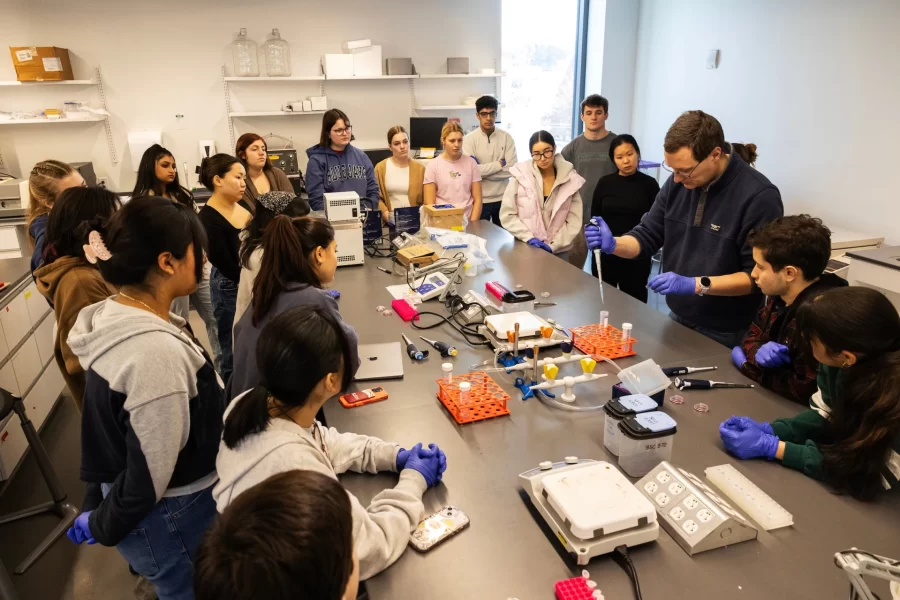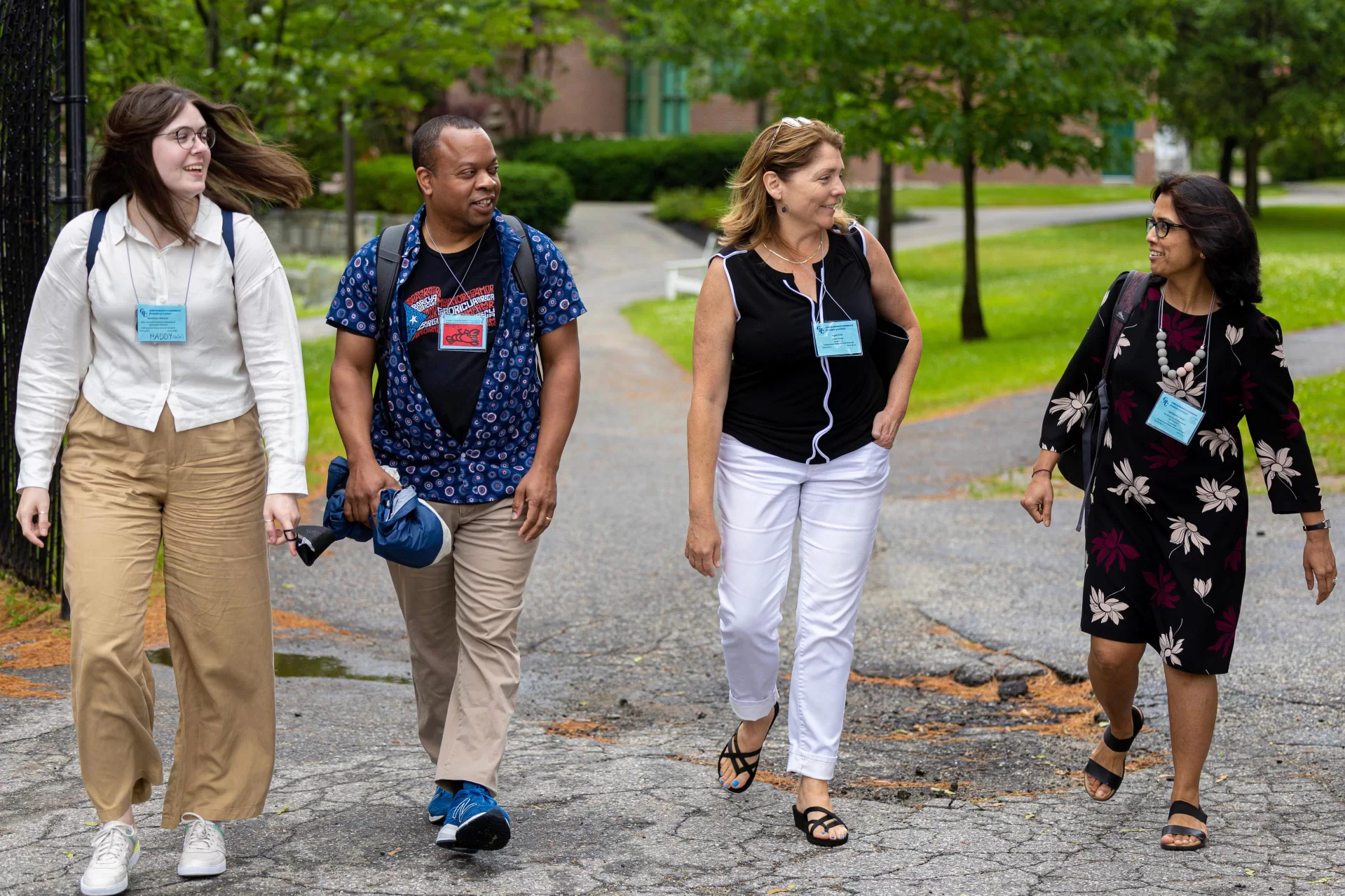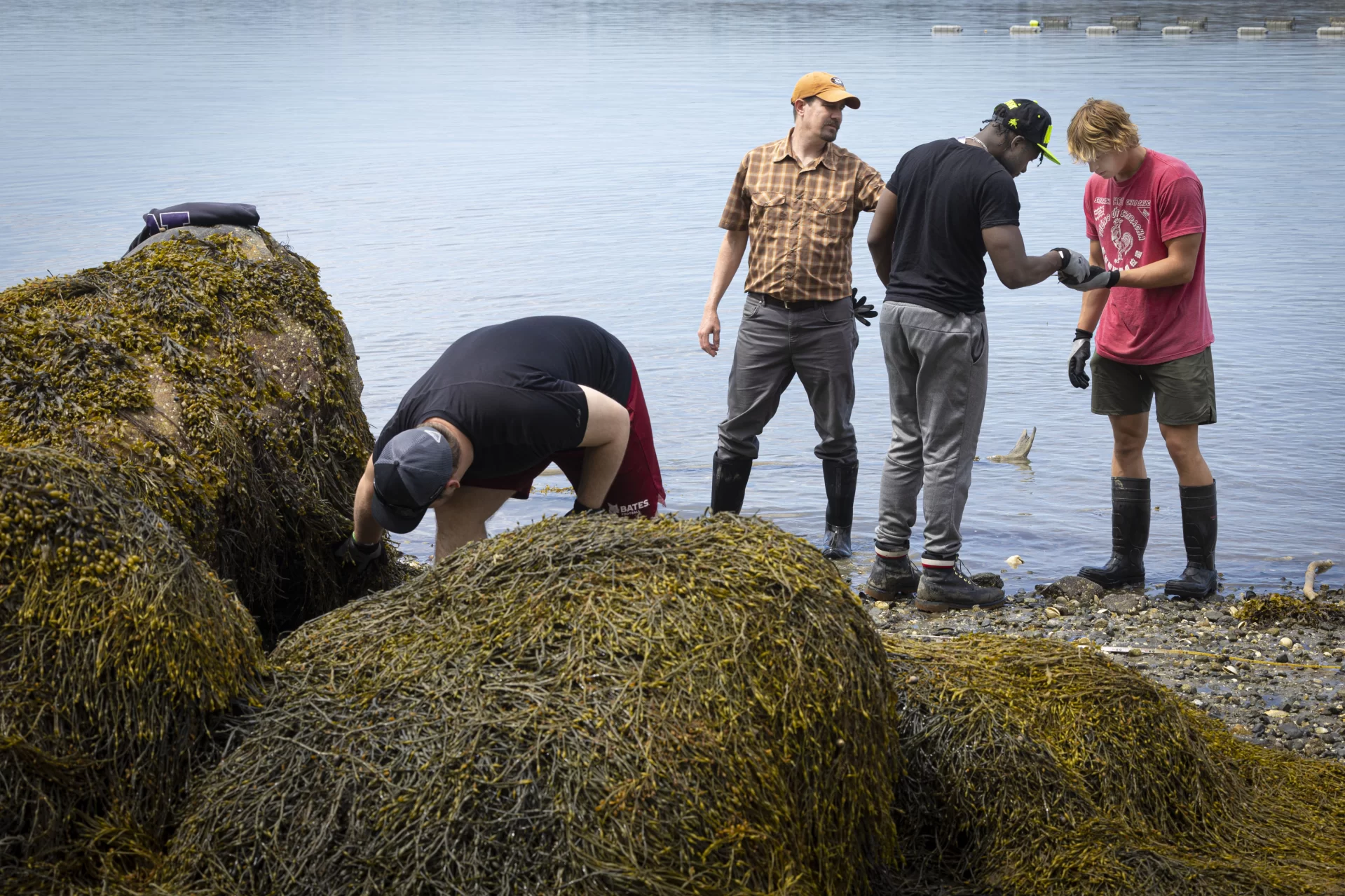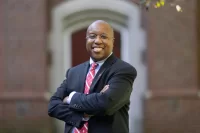
Studies have identified a troubling gap in U.S. higher education between the percentage of students who arrive at college hoping to major in a STEM field (science, technology, engineering, and math) and the much lower percentage who graduate with such a major.
Statistics show that the fall-off is even higher among Black and Hispanic students.
At Bates, new approaches to teaching STEM subjects have yielded dramatic results over the last six years: improved retention outcomes for all students and particularly within the college’s Black and Hispanic students.
“This is exactly the kind of institutional change we want for our students.”
Bates President Garry W. Jenkins
The ratio of Bates students who enter with STEM hopes and are able to stay with a STEM major is now higher than national averages, including when compared to Bates’ peer institutions, highly selective four-year institutions.
STEM-interested Bates students who are Black are now more than 50 percent more likely to earn a STEM degree than they were in 2016, according to data from Bates and the National Center for Education Statistics (NCES).

“This is exactly the kind of institutional change we want for our students,“ said President Garry W. Jenkins.
“Our STEM faculty has been intensely focused on creating more equitable educational opportunities. These findings show how successful their innovations have already been. It’s exciting for our institution, our students, and prospective students. The data shows that Bates is one of the absolute very best places in the country to study mathematics and the sciences, and every student interested in STEM should give Bates very serious consideration. ”
April Horton is the Wagener Family Professor of Equity and Inclusion in STEM at Bates and a national expert in equity and inclusion in the sciences. Horton said that Bates’ effort to improve equity for marginalized students and be more inclusive has led to improvements in outcomes across the board.

“Our classes are changed for everyone,” said Horton. “If you look at the data, you see that the white students do better, too. Everyone does better because you have a way of teaching that really engages every student and that has a variety of ways that people can learn.”
Horton came to Bates in 2018 from the University of Richmond, where she chaired the biology department and helped create more equitable STEM programs. She arrived at Bates confident in her methods for building more inclusive teaching, and found many willing partners, but together, they faced an uphill battle.
At the time, “STEM at Bates had a negative reputation,” Horton said, citing past student surveys and data that showed Black students leaving for other majors. “And I think we’ve worked really hard to change that.”
Last November, Horton present the Bates findings at an American Association of Colleges and Universities conference focusing on transforming STEM higher education. Afterward, she was approached by other academics who expressed surprise at how quickly Bates improved its methods and outcomes.
“They were saying, ‘I just didn’t think you could do this in just a few years, but you’ve shown that you can,’” said Horton. “And it’s my belief that if a school changes their practices and the way that their curriculum is set up with the existing populations of students, they can increase the number of students that are persisting and not just persisting but actually doing really well in STEM.”
Bates has found that making changes in the teaching approach in various areas of STEM courses, such as diving into real life research problems in introductory courses, can make a real difference in serving diverse populations well in academia, Horton said.
Horton credits her Bates colleagues across all STEM subjects, who, beginning in 2017, took a hard look at student surveys and outcomes and saw a problem with how they were getting through to marginalized students, for doing the hard work of changing the curriculum. “I have a huge amount of admiration for my colleagues here,” Horton said.
Changes in introductory Bates courses with longstanding reputations as the kind that “weeded” students out are particularly striking. Once lecture-based, those courses focused on textbooks, “cookbook labs” (where the outcomes are known) and high-stake exams.

Among the changes were how faculty approach teaching these courses, by emphasizing a growth mindset that focuses on students’ potential and ways to support their progress.
The faculty also focus on skill building and active learning, with real-world problems that were unresolved. (Such as would feeding dairy cows seaweed reduce the harmful methane emissions from dairy herds that contribute to climate change?) And they offered multiple paths through the core curriculum in the biology department.
When it came time to assess the new courses, the equity gap had not only narrowed sharply, but success rates for all students had improved between 2019 and 2023.
The Data Says…
To evaluate its progress, Bates has compared its retention of students who are interested in STEM majors with data from the National Center for Education Statistics. The results suggest impressive progress.
This table compares the most recent national data (2017) for highly-selective four-year institutions to Bates data. The percentages represent those arriving with an interest in a STEM major and then graduating with a STEM major:
| Category of Student | National Data | Bates Data |
|---|---|---|
| White Students Arrive & Graduate w/STEM | 46% | 58% |
| Black Students Arrive & Graduate w/STEM | 26% | 42% |
| Hispanic Students Arrive & Graduate w/STEM | 44% | 49% |
Within Bates data, notable finding is that Black students interested in STEM are 50 percent more likely to graduate with a STEM degree at Bates than they were prior to the curricular revisions.
Today, even the way Bates students talk about their STEM education reflects progress, said Horton. “During the first year of our program, when students were asked to describe the culture of STEM at Bates, two of the most frequent words used were “competitive” and “challenging.”
But last year the most frequent words used to describe the culture of STEM at Bates were “inclusive,” followed by “collaborative” and “supportive.”

